How to improve patient satisfaction survey response rates
By Kate Monica●4 min. read●Oct 14, 2024
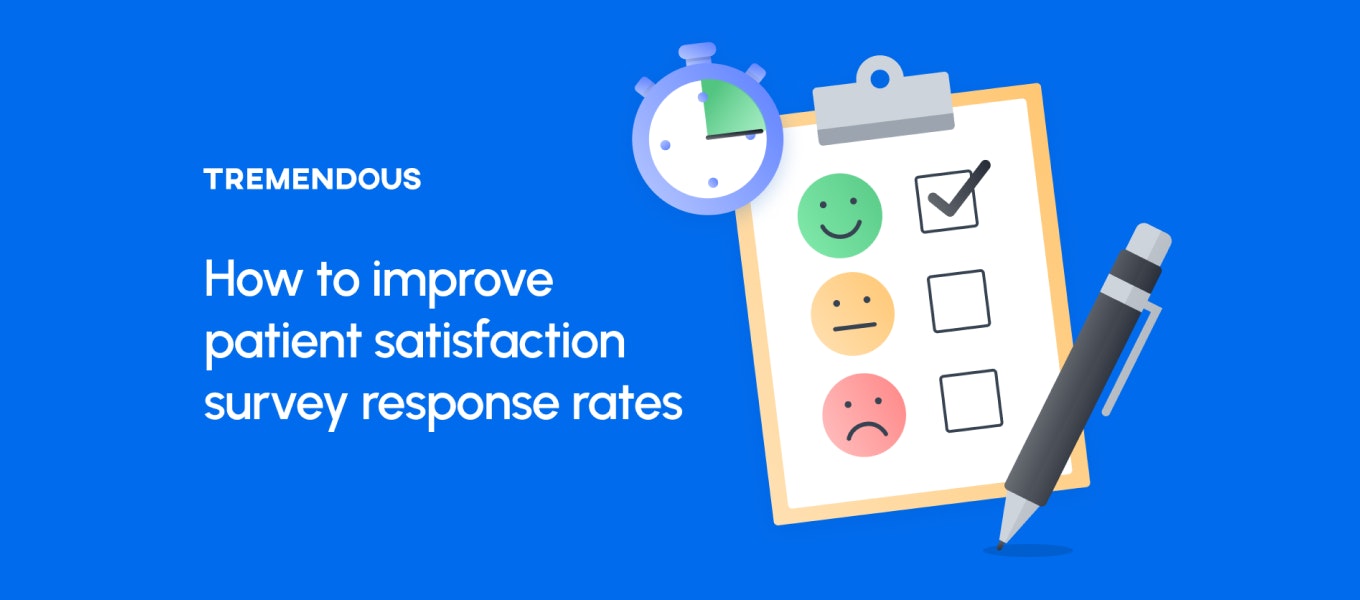
For most healthcare organizations, patient satisfaction survey response rates fall somewhere between 3% and 70%. That’s a ridiculously wide range.
It’s really important to push your response rates up. Reliably increasing survey response rates benefits your healthcare organization’s financials under the value-based care system.
Providers receive financial incentives based on performance measures. And one way the federal government evaluates performance measures is by tracking patient-reported outcomes in these surveys.
Why it matters
Healthcare satisfaction surveys are administered shortly after the care experience.
The goal: get more responses back, from a representative sampling of your patient population, within 0-5 weeks of the patient visit.
Why are larger sample sizes important for patient satisfaction surveys?
A larger sample size provides a more complete picture of how patients feel about their quality of care.
But also, the respondents you’re getting right now mostly trend older and white. And diversity of respondents is important, especially as CMS (the Centers for Medicare and Medicaid Services) zeroes in on social determinants of health.
And getting responses back quickly matters, too. Longer response rates are correlated with lower patient satisfaction scores. And longer response times can exacerbate certain biases, like selection and recall biases.
So, finding ways to get more patient satisfaction survey responses back quicker will help to increase your patient satisfaction scores. It’ll also help to increase the diversity of your respondents.
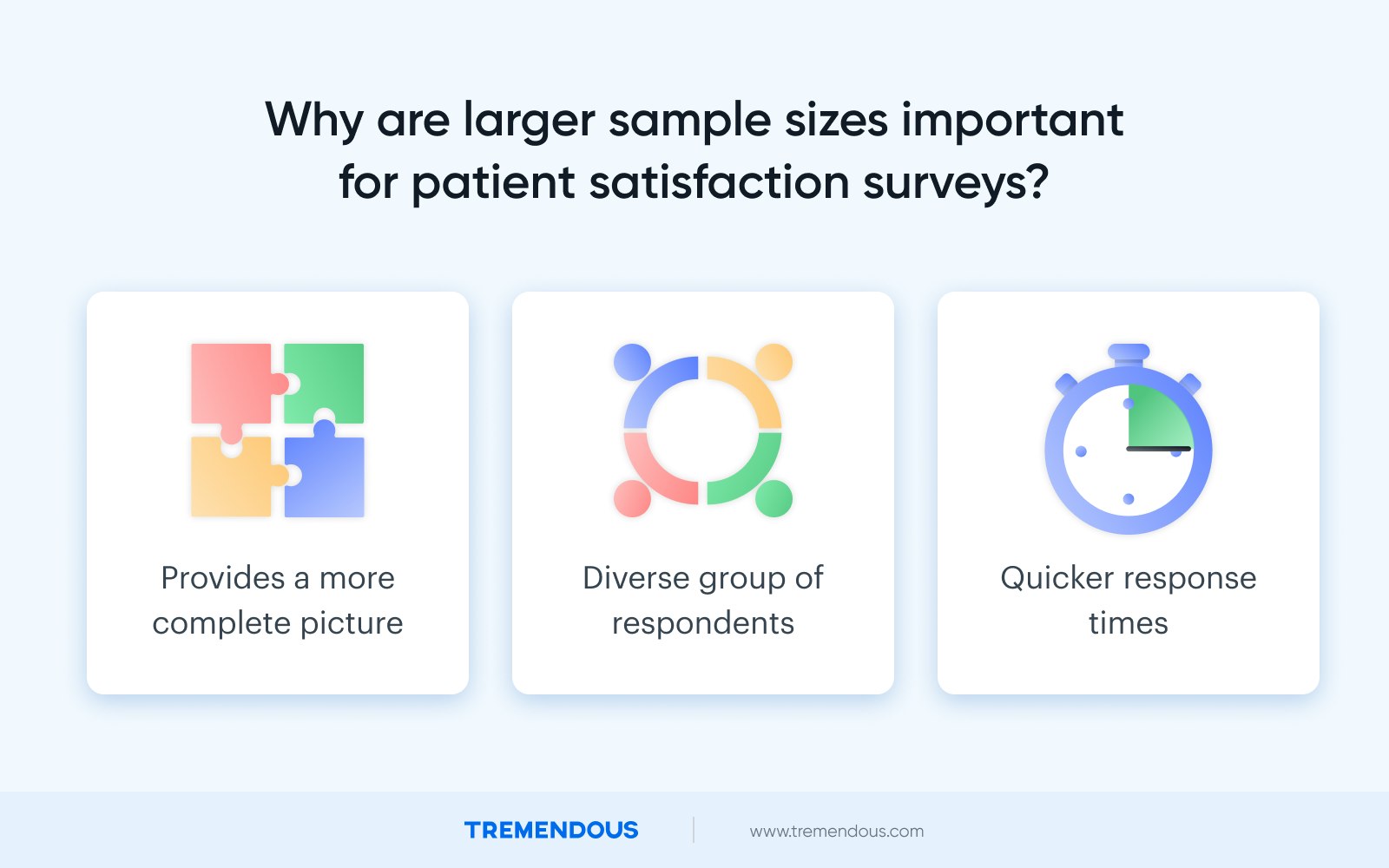
A little goes a long way: small incentives boost response rates
Providing a financial incentive to patients who complete surveys does, indeed, increase response rates. On average, incentives increased response rates by a median of 12%.
In a randomized study, Price et. al observed how different incentives influenced response rates. Here’s the breakdown of those results:
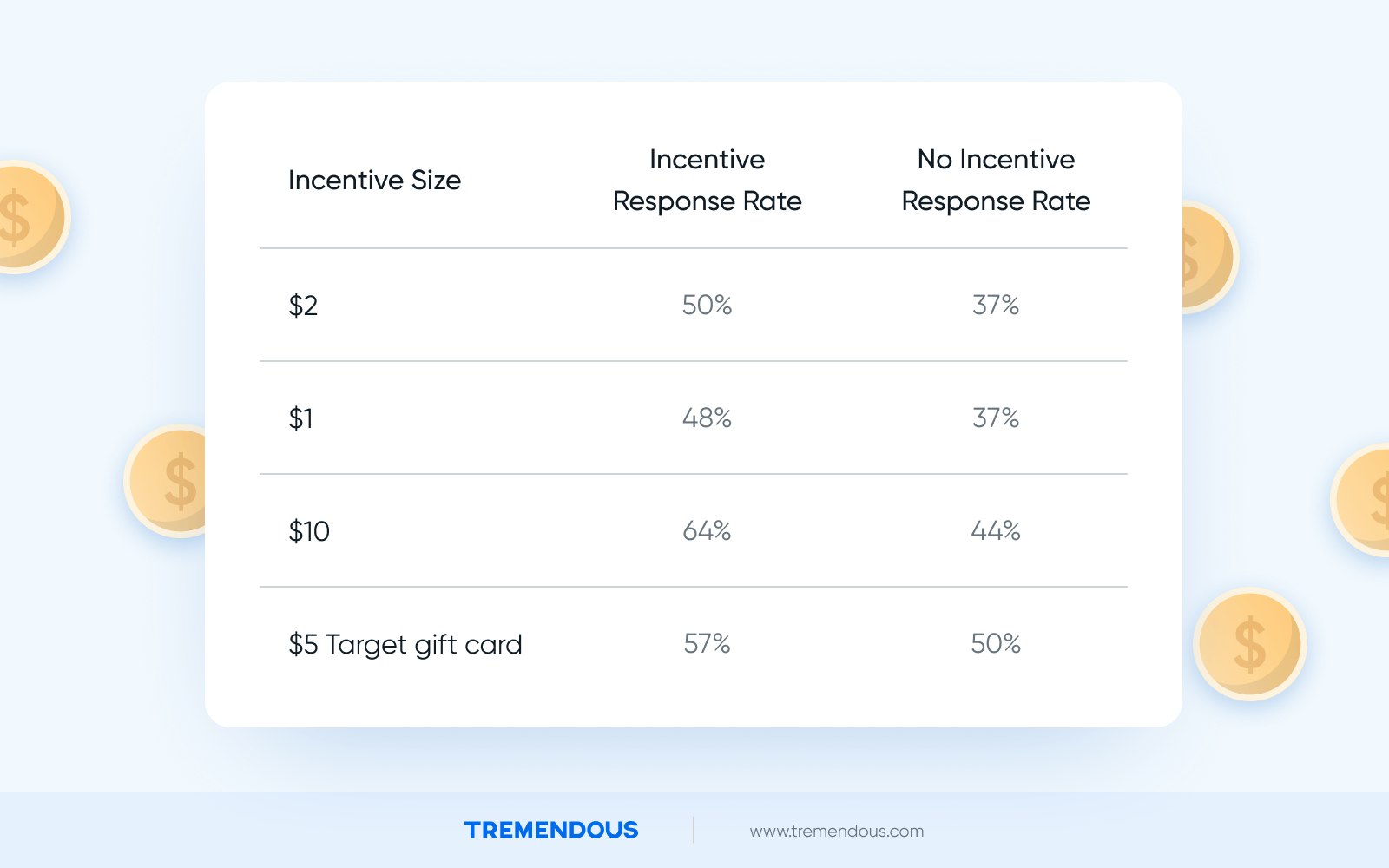
A $10 incentive increased survey response rates by 20%. For a small price, healthcare providers can significantly improve their patient satisfaction survey program.
When you deliver the incentive matters
If you’re doing survey invitations by mail or email, provide the incentive upfront.
Including a cash incentive when you initially send over the survey yields higher response rates than providing the cash incentive after you receive the completed survey.
So, if you’re deciding between prepaid incentives or post-paid incentives, go with prepaid.
→ Sidebar. Why is prepaid best?
Don Dillman explains this curiosity using social exchange theory in his book, “Survey Methodology” (2020).
Social exchange theory posits that pairing survey invites with a prepaid incentive does a couple helpful things:
It draws attention to the request, reducing the likelihood that the survey will be immediately discarded.
It establishes trust with the participants about the intentions of the survey or study. Basically, respondents see that you really value their feedback.
It triggers a sense of reciprocity. You already gave them money, so most people will feel like they might as well give you the information you want in return.
How to reduce bias and improve patient satisfaction scores
In our intro guide to patient satisfaction surveys, we identified two biases that crop up when patients take too long to respond:
Recall bias: As time passes, our mind muddles our memories. We’re not as good at accurately recalling small details as we’d like to think, and we naturally omit things or misremember our experiences after a while. It’s nobody’s fault, but it biases survey results against the truth.
Selection bias: This is when the people who volunteer to participate in a survey or study differ significantly from the larger population. Interestingly, selection bias also increases with time.
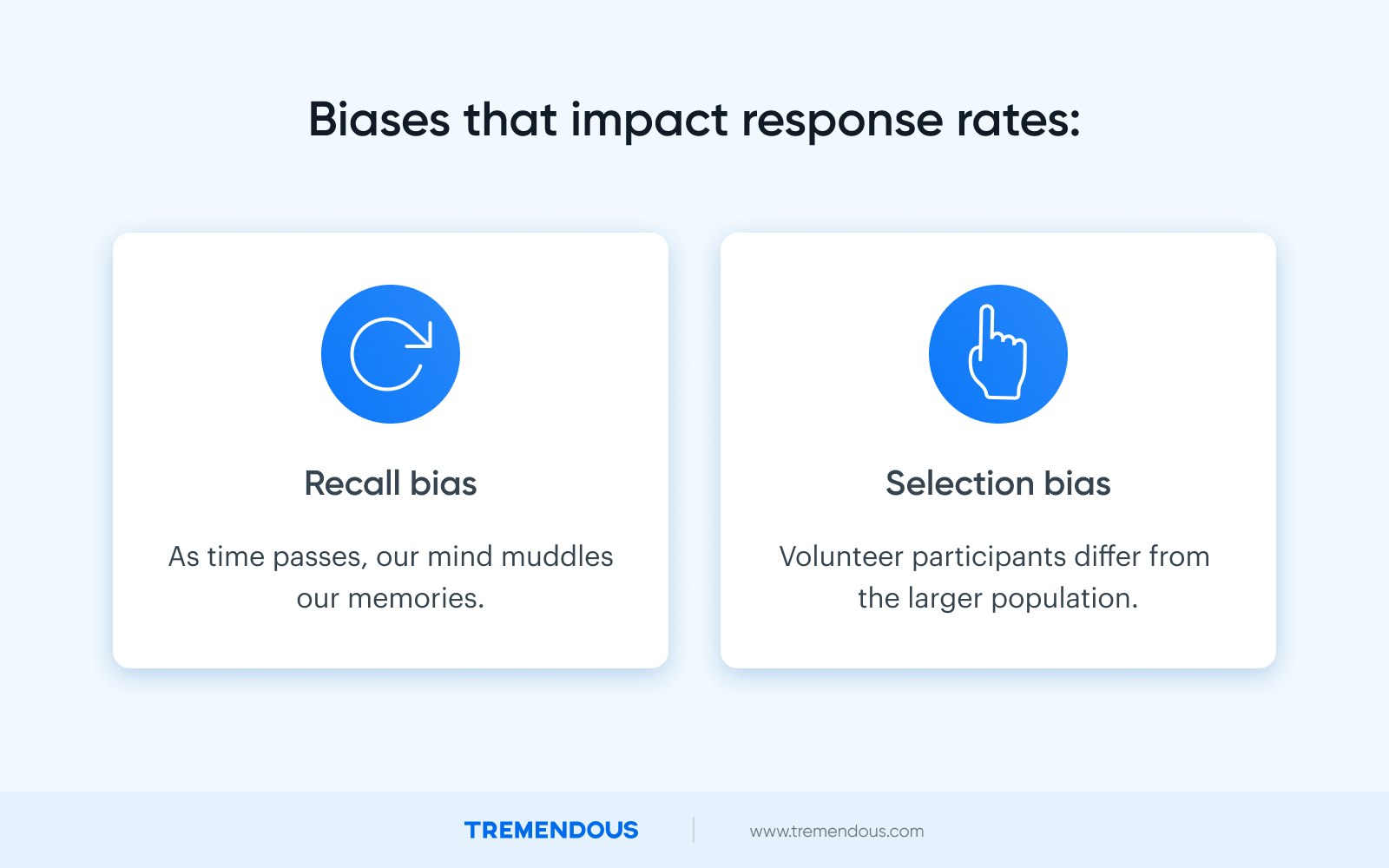
The fix
Encourage patients to send survey responses back sooner rather than later. And the faster patients turn in their surveys, the more likely they’ll have positive things to say.
Here’s how you can encourage patients to respond to your survey as soon as possible:
Send it digitally - via email or text: Mailed patient satisfaction surveys often arrive between 1-5 weeks after the care experience. That’s too long. Patients forget important details. Conversely, emails and texts can be triggered immediately after patients leave the office.
Call the day after the appointment: Phone call encourage fast feedback and might promote more positive responses. One Health Services Research study found patients who completed surveys by phone often gave more favorable evaluations.
In some instances, phone surveys were 30% higher than surveys done by mail.
Keep it short and sweet
Attention spans are shorter than ever. So it follows that patients are more likely to respond to shorter surveys than long ones.
One Value in Health study found the response rate for a shorter questionnaire was 64%, versus 58% for those who received a longer health care satisfaction survey.
→ Sidebar: Let’s clarify what “shorter” means here
“Shorter” means fewer, less complex questions.
But there’s some caveats here. In addition to keeping surveys short, it’s also important to make them as simple as possible. The complexity of possible responses and the way you ask questions also matters.
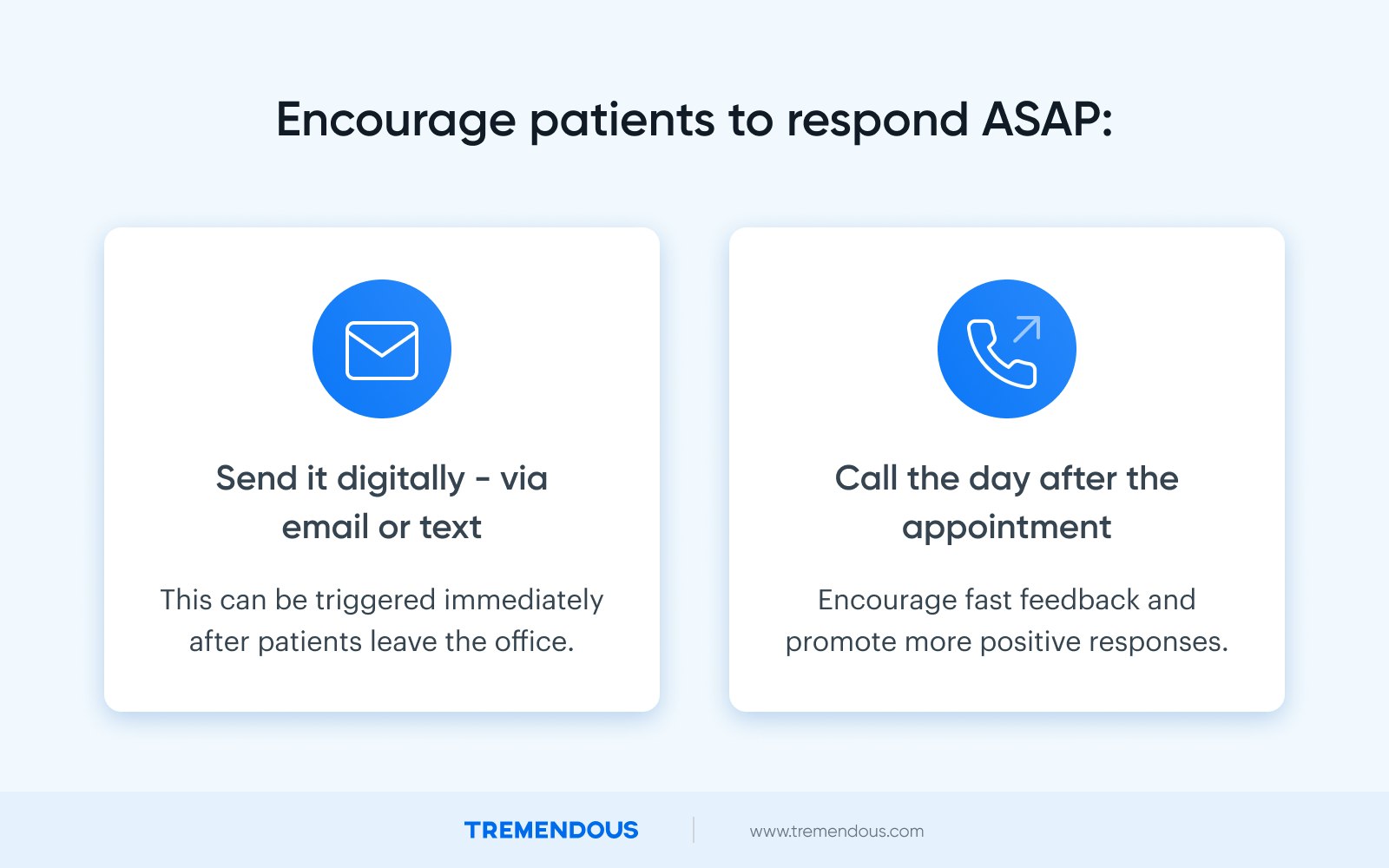
The bottom line
Here’s how you can improve patient satisfaction survey response rates and reduce bias:
Include a small, prepaid incentive with the survey. Ten dollars cash will yield the highest response rates for a short survey. Sending it in an email along with the survey itself is probably the best way to do this.
Go digital. Again, email makes the most sense if you’re planning to offer an incentive.
Keep it short and sweet. Don’t overwhelm the patient with a ton of questions, and try to keep the phrasing of your questions simple and straightforward.
Short, digital, incentivized surveys will way outperform mailed, lengthy surveys that don’t offer an incentive.